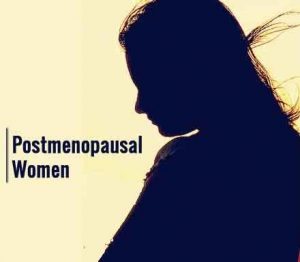- Home
- Editorial
- News
- Practice Guidelines
- Anesthesiology Guidelines
- Cancer Guidelines
- Cardiac Sciences Guidelines
- Critical Care Guidelines
- Dentistry Guidelines
- Dermatology Guidelines
- Diabetes and Endo Guidelines
- Diagnostics Guidelines
- ENT Guidelines
- Featured Practice Guidelines
- Gastroenterology Guidelines
- Geriatrics Guidelines
- Medicine Guidelines
- Nephrology Guidelines
- Neurosciences Guidelines
- Obs and Gynae Guidelines
- Ophthalmology Guidelines
- Orthopaedics Guidelines
- Paediatrics Guidelines
- Psychiatry Guidelines
- Pulmonology Guidelines
- Radiology Guidelines
- Surgery Guidelines
- Urology Guidelines
Which bone measures predict fractures in postmenopausal women?

When investigators compared initial bone parameters with changes in those parameters over time in postmenopausal women, they found that initial measurements were significantly associated with women's risk of fracture. Rates of changes in bone density, microarchitecture, and strength were similar between the fracture and non-fracture groups.
These findings published today in the Journal of Bone and Mineral Research suggest that peak bone mass and density may play a more important role in fragility fractures than bone loss.
"Although we know that low bone mineral density is associated with increased fracture risk, the inclusion of microarchitectural information provides a novel opportunity to improve our assessment of bone integrity over traditional bone mineral density," said senior author Dr. Steven Boyd, of the University of Calgary, in Canada. "Our study suggests that there are specific underlying architectural features that are associated with fracture outcomes, and that combining high resolution imaging with computer methods are important new tools to assess and monitor bone strength."
To read the full article click on the given link http://dx.doi.org/10.1002/jbmr.3347
These findings published today in the Journal of Bone and Mineral Research suggest that peak bone mass and density may play a more important role in fragility fractures than bone loss.
"Although we know that low bone mineral density is associated with increased fracture risk, the inclusion of microarchitectural information provides a novel opportunity to improve our assessment of bone integrity over traditional bone mineral density," said senior author Dr. Steven Boyd, of the University of Calgary, in Canada. "Our study suggests that there are specific underlying architectural features that are associated with fracture outcomes, and that combining high resolution imaging with computer methods are important new tools to assess and monitor bone strength."
To read the full article click on the given link http://dx.doi.org/10.1002/jbmr.3347
bone measuresDr. Steven BoydfractureJournal of Bone and Mineral ResearchJournal of Bone and Mineral Research slow bone mineral densitymenopausepostmenopausal
Source : Public ReleaseNext Story
NO DATA FOUND

Disclaimer: This site is primarily intended for healthcare professionals. Any content/information on this website does not replace the advice of medical and/or health professionals and should not be construed as medical/diagnostic advice/endorsement or prescription. Use of this site is subject to our terms of use, privacy policy, advertisement policy. © 2020 Minerva Medical Treatment Pvt Ltd